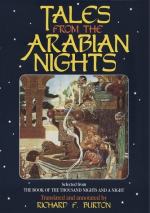With an army of 60,000 only, and an aggregate of half a million of people led out of Egypt, all the history becomes instantly rational and trustworthy.
There remains one more bubble to be exploded.
Look at these figures, in which a quadruple increase—at least 25 per centum too great—is granted.[FN#233]
1st Generation, the Patriarchs, in number. . . . . . . . . . . 12 2nd Generation, Kohath, Pharez, etc. . . . . . . . . . . . ..48 3rd Generation, Amram, Hezron, etc.. . . . . . . . . . . . .192 4th Generation, Aaron and Moses. . . . . . . . . . . . . . .768 Aggregate . . . . . . . . . . . . . . . . . . . .1,020 Minus 25 per cent. for deaths, children, etc.. . . . . . . . .255 Actual number of Bene Jacob. . . . . . . . . . . . . . . . . .765
But Jacob and his sons brought with them herdsmen, shepherds, servants, etc. Bunsen puts the number of all, masters and men, at less than 2,000.
Let the proportion in this case be one able-bodied man in four persons, and the increase triple.
1st Generation, the Patriarchs, in number. . . . . . . . . . .500 2nd Generation, Kohath, Pharez, etc. . . . . . . . . . . .1,500 3rd Generation, Amram, Hezron, etc.. . . . . . . . . . . .4,500 4th Generation, Aaron and Moses. . . . . . . . . . . . . 13,500 20,000 Minus 25 per centum as above . . . . . . . . . . . . . . . .5,000 15,000 Add the real Bene Jacob. . . . . . . . . . . . . . . . . . . .765
Aggregate. . . . . . . . . . . . . . . . . . . . . . . . . 15,765
Were these people, while Joseph is still alive, the subjects of slavery as described in Ex. i.? Did they build Pithom and Ramses, store-cities?
The number is sufficient to lead in the great enterprise and to control the mixed multitude which was at Sinai, adopted as “Bene Israel,” “Seed of Abraham,” and divided among and incorporated with the tribes; but not sufficient to warrant the supposition that with so small a force the Hebrew leaders could for a moment have entertained the project of conquering Palestine.
A word more on the statement in Ex. i. 11: “And they built for Pharaoh store-cities, Pithom and Ramses.” All Egyptologists agree that these cities were built by Ramses ii., or certainly not later than his reign. If the Hebrew genealogies are authentic, this was long before the coming of Jacob and his sons into Egypt.




